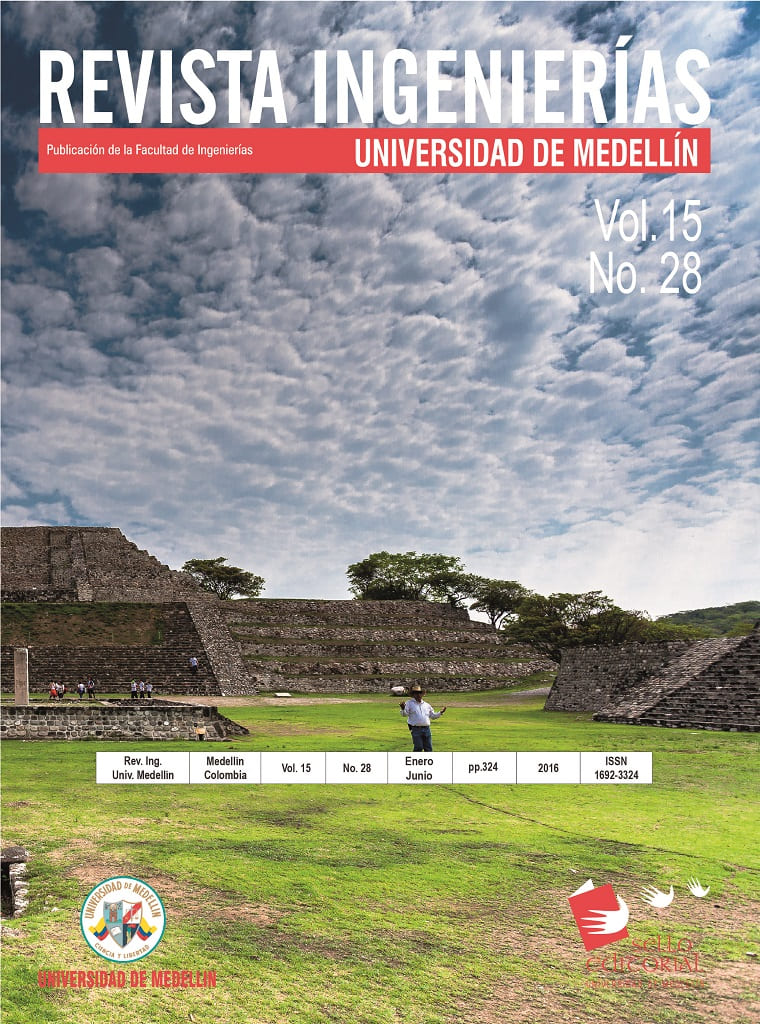Analysis of rolling in high-strength structural steel plates (S690QL)
Main Article Content
Abstract
The research calculates the rolling process conditions in a 3-roll bending machine. Initially, structure and mechanical properties of the highstrength steel to be processed are determined in an experimental manner. Then, equations that allow determining the relationship between thickness and width of the steel to be bent are established, taking into consideration strength features of the bending machine. Finally, some graphs that help achieving an efficient and adequate processing of the steel are presented, choosing width/height and strength required for the plate forming, according to its thickness. The information obtained will allow having a number of welding joints needed to obtain final height/length of the component, from the design process of a part to be formed.
Article Details
References
[2] Goover, Fundamentos de Manufactura Moderna, México: Editorial Prentice Hall, 1997.
[3] J. H. Panchal, S. R. Kalidindi y David L- Mc, "Key computational modeling issues in Integrated Computational Materials Engineering," Computer-Aided Design.
[4] Z. W. Weilong Hu, "Theoretical analysis and experimental study to support the development of a more valuable roll-bending process.," International Journal of Machine Tools & Manufacture, pp. 731-747, 2001.
[5] M. H. Y.H. Lin, "Influence of strain hardening on continuous plate roll-bendingprocess," International Journal of Non-Linear Mechanics, pp. 883-896, 2000.
[6] J. B. d. Aguiar, G. M. Barbosa y G. F. Batalha, "Sheet bending theory applied to a three roll process," de Congresso Brasileiro de Engenharia de Faricacao, Curitiba, Paraná-Brasil., 2001.
[7] H. R. A.H. Gandhi, "Analytical and empirical modeling of top roller position for threeroller cylindrical bending of plates and its experimental verification," Journal of materials processing technology, p. 268–278, 2008.
[8] H. Gajjar, A. Gandhi y T. y. R. H. Jafri, "Bendability Analysis for Bending of C-Mn Steel Plates on Heavy Duty 3-Roller Bending Machine," International journal of aerospace and mechanical engineering, 2007.
[9] H. C. ZhengkunFeng, "Modeling and simulation of asymmetrical three-roll bending process," Simulation Modelling Practice and Theory , pp. 1913-1917, 2011.
[10] ThyssenKrupp Steel, "ThyssenKrupp," 20 Junio 2013. [En línea]. Available: www.ThyssenKrupp. com.co.
[11] American Association State, Designation. A514/A514M – 13 Standard Specification for High-Yield-Strength, Quenched and Tempered Alloy Steel Plate, Suitable for Welding, United States: ASTM International, 2009.
[12] American Association State, "Designation: E8/E8M – 13a. Standard Test Method for Tension Testing of Metallic Materials," ASTM International, 2013.
[13] ASTM, A370-11 Standard Test Methods and Definitions for Mechanical Testing of Steel Products, 2011.
[14] American Association State, Designation. A751-08 Standard Test Methods, Practices, and Terminology for Chemical Analysis of Steel Products, 2008.
[15] W. F. Hosford, Mechanical Behavior of Materials, Cambridge University Press, 2005.
[16] American Association State, Designation: ASTM E646 Standard Test Method for Tensile Strain-Hardening Exponents ( n-Values) of Metallic Sheet Materials.
[17] ThyssenKrupp, Processing Recommendations. N-A-XTRA® and XABO® high strength steels., ThyssenKrupp Edition 09, 2010.
[18] ROUNDO, 3-Roll Plate Bending Machine Type PS.
[19] J. D. a. S. H. Z. Marciniak, "Butterworth Heinemann," Mechanics of sheet metal forming, pp. 82-106, 2002.





